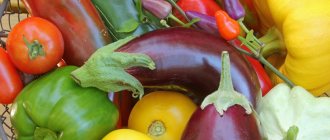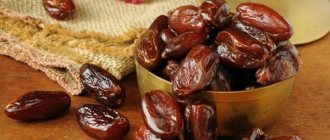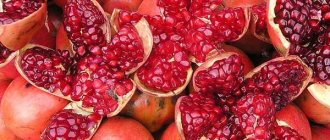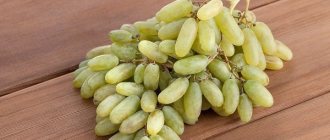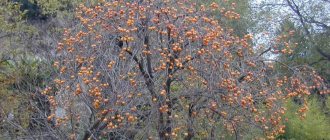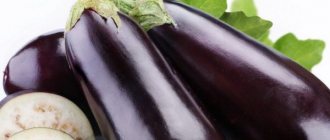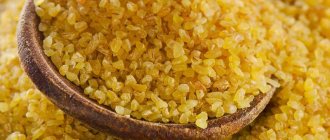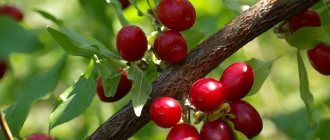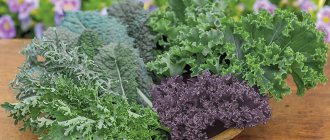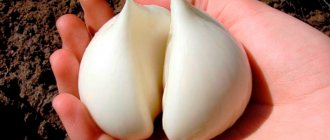Life form
Representatives of legumes are found in a variety of life forms. These are mainly woody and semi-woody plants.
Woody biomorphs are presented in the form of shrubs, trees, and perennial herbs. Herbaceous forms are found in countries with temperate climates.
Acacia Caragana
Examples of these forms are acacia, bean, black locust, wisteria, china and many other species.
Semi-arboreal life forms of legumes are subshrubs and subshrubs. Examples of the most famous species are Sophora, broom, and panicle.
Sophora japonica
Such bioforms are mainly found in countries with temperate and tropical climates.
Sometimes in the tropics there are leguminous plants in the form of vines. For example, ditch.
Soybeans
Soybean is not at the top of the list of fruit legumes, but is actively gaining popularity among gardeners. This is a herbaceous annual plant with a high yield index. Despite its drought resistance, you can count on a decent harvest only with regular watering. Areas with loamy soil, well-lit and protected from the wind are best suited for planting.
Related article:
How to grow good seedlings of any vegetables
As an adult, the shrub reaches a height of up to 2 m, branching into many side shoots. The stems and shoots are rough to the touch, covered with brownish hair. When ripe, the fruits acquire a sickle shape, turning brownish. Inside the pod there are usually 1-4 beans of a round, flat or oval-elongated configuration.
Soy is an ideal product for the prevention of cardiovascular diseases. It contains vitamins E, A, group B, as well as the entire spectrum of microelements: iron, manium, calcium, sulfur, potassium, iodine, etc. It is used to produce inexpensive meat and milk substitutes, flour, butter, tofu, all kinds of sauces and feed for farm animals.
Root system
The root system of moths is taproot.
Most plants have tubers on their roots. They appear due to the functioning of nodule bacteria that come from the soil.
These bacteria absorb and metabolize nitrogen, resulting in the formation of minerals that the plants themselves feed on.
Since nitrogen is found in proteins, most legumes are rich in this nutrient.
After the plant roots die, the soil is enriched with produced nitrogen and becomes more fertile.
Lentils
Another representative of the legume family, well known and actively cultivated in Russian latitudes. Lentils are quite unpretentious to grow, but the best harvest will be harvested on loamy and sandy loam soils. Heavy and acidified soils can be corrected before planting by adding sand or lime, respectively.
The stem of the plant usually reaches a length of 20-75 cm, attached to vertical supports with tendrils. The inflorescences consist of small pink, purple or milky white flowers formed into racemes. Flowering begins in mid-June and continues throughout July. The pods themselves are diamond-shaped, containing 1-3 flattened beans inside. The color of the seeds varies depending on the variety.
Lentils contain a lot of vegetable protein and iron, however, unlike other legumes, the level of tryptophan and amino acids is low. Compared to peas, there is less fat and fat, but folic acid in one serving of lentils is about 90% of the daily requirement. The composition also includes Omega-6 and Omega-3 fatty acids, manganese, molybdenum, zinc, vitamins PP, A, C and group B.
Related article:
What are nitrates in vegetables
Flowers
The main characteristics by which representatives of legumes are usually united into one family are the structure of the flower and the type of fruit.
The flowers of most legumes are insect-pollinated and bisexual.
They usually have a five-membered calyx and corolla, symmetrical.
The standard number of stamens is 10. They are arranged in two circles. In the early stages of development, there are cases of splitting of the tubercles. Then the number of stamens increases significantly.
The legume family has its own accepted designations. The large upper petals of flowers are called a sail or flag, the side petals are called oars or wings, and the fused lower petals are called a boat.
Peas
A climbing annual, beloved by all gardeners for its ease of care and excellent taste. It is very easy to recognize the plant by its characteristic branched tendrils, with the help of which it is attached to a support, white-milky or pink-purple flowers that look like moths, and elongated green pods.
Related article:
6 crops to plant in your garden in August
Varieties of seed peas can be grouped into three main groups:
- Peeling. The peas have a round shape and a smooth texture. Dry grains are usually used to prepare first and second courses. Due to its high starch content, the peeling variety is used not only in the food industry, but also in the production of bioplastics.
- Cerebral. It owes its name to the resemblance of ripe, wrinkled peas to the convolutions of the brain. Fresh peas taste very tender and sweet. It is not suitable for boiling, frying and stewing, as it does not boil softly, but for canning it is exactly what you need.
- Sugar. The main difference from other legumes is the absence of a parchment film in the pods. After drying, the grains visually shrink due to loss of moisture, but do not lose their beneficial properties. In one pea you can find almost the entire periodic table, as well as fatty acids, dietary fiber, starch, vitamins B, K, E, A.
Related article:
How to grow chicory salad
Distribution and habitat
Legumes are found all over the world. In terms of breadth of distribution, legumes are second only to cereals.
Lupines in New Zealand
The reason for this is the exceptional ability to adapt to any climatic conditions.
In countries with temperate, boreal, subtropical and tropical climates, beans form a significant part of the plant world. Only in cold climates is the percentage of beans small.
Common peanut
When compiling a list of legumes that are especially popular, one cannot fail to mention peanuts.
The seeds of this plant, which contain fatty oil used in a wide variety of industries, are considered very useful. It is thanks to him that peanuts are in second place among legumes in nutritional value. Its fruits contain about 42% oil, 22% protein, 13% carbohydrates. Most often they are consumed fried, and the vegetative mass is used as animal feed.
Features of legumes
Soybeans
- Due to the high proportion of protein in beans, the crop is widely used as a food product.
- Moths are one of the best honey plants. Therefore, plants are often used in medicine. For example, thermopsis and licorice are common ingredients in cough medicines.
- In agriculture, grass and other types of legumes play one of the most important roles. Some are used as animal feed, others as fertilizer, and still others are used for hay.
- Some plant species are cultivated exclusively for ornamental purposes. These are lupine, sweet pea, mimosa, etc.
Clover
The most famous representative of this type of legume is meadow clover, or red. It is easily recognized by its finely toothed trifoliate leaves and inflorescences in the form of rounded balls of pinkish, white or lilac hue. Flowering begins in June and continues until September, the seeds ripen in August-October.
As in nature, in cultivated cultivation meadow clover is unpretentious, but loves sun and moisture. Neutral or slightly acidic soils are more suitable for sowing; it is advisable that wheat, oats or other cereal crops have previously grown on them. The land must first be deeply plowed and cleared of weeds.
In addition to the fact that clover greens and straw are used to feed livestock, the plant is also positioned as a valuable homeopathic medicine. Plant extracts are obtained from it and used in drug formulations for the treatment and prevention of tuberculosis, whooping cough, bleeding, and also as a means to increase appetite.
Related article:
Top 5 most productive peppers for stuffing
Representatives of the legume family
There are about 18 thousand different species.
Clover
List of the most common ones:
- clover;
- peanut;
- soy;
- peas;
- beans;
- lentils;
- white acacia;
- rank;
- locust;
- mimosa, etc.
Caesalpinia pulcherrima
Caesalpinia bonducella is most often a vine that reaches a height of up to 15 meters. Mainly grows in Asia, Africa, South America. It is used in folk medicine, as an anti-fever remedy is obtained from its seeds.
Colvillea
Parkinsonia
Peltophorum
Caesalpinia echinata grows only in eastern Brazil. Due to deforestation, this type of tree can be found very rarely in the wild. There are sharp growths on its trunk. That's why they called it hedgehog.
It grows up to 30 meters in height. Previously, the trunk of this tree was used to obtain dyes. Belongs to valuable tree species.
b) Cassieae
c) Cercideae
The crimson plant grows in China.
Bauhinia (Bauhinia) is distributed throughout the world.
d) Detarieae
Brownea
Vika
A common annual plant that is found almost everywhere. It is often a weed that grows along roads and where there is a lot of garbage. Since it is able to grow in the most unexpected places, it is not picky about the soil, and is resistant to frost.
The flowers are usually single, purple or pink, less often white. The beans are light yellow in color and wide.
broad beans
This annual plant, capable of reaching a height of 180 cm, has round white flowers with dark spots on the wings, collected in inflorescences.
The fruit is a bean. One plant can develop 10-20 fruits, and in some cases even more.
The advantage of broad beans is the powerful attachment of the lower fruits, as this allows the harvest to be harvested using combines and other agricultural machines.
Conclusion
These vegetable crops are very valuable and nutritious. Many people believe that eating legumes can lead to rapid weight gain, but this is not entirely true. Despite the fact that they are quite high in calories, all the elements contained in these products are of plant origin, so they do not pose any harm if you do not combine them with the consumption of other high-calorie foods. The above is not the entire list of legumes suitable for consumption; in fact, there is much more. This means that even the most sophisticated gourmet will find the type that suits his taste.
